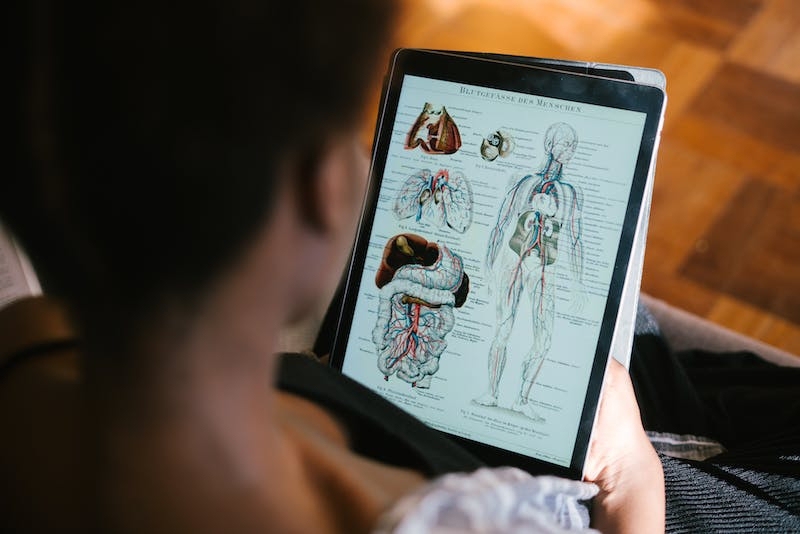Introduction:
In the vast and intricate tapestry of life, the human body stands as a marvel of intricate design. Understanding the basics of human anatomy lays the groundwork for comprehending the complexities of our physiological makeup. In this comprehensive guide, we will embark on a captivating journey, delving into the fundamental elements that constitute the human body and the remarkable systems that sustain its existence.
1. The Body's Blueprint: An Overview of Human Anatomy
The study of human anatomy is a multidimensional exploration encompassing the structure and organization of our body. We'll begin by discussing the various levels of anatomical organization, from cells to tissues, organs, and organ systems. This foundation will help us comprehend the interdependence of these components and their role in maintaining optimal health.
2. Building Blocks: Cellular Anatomy
Cells are the microscopic building blocks of life. We will explore their diverse types and functions, uncovering the intricate machinery that powers our bodies. From red blood cells that transport oxygen to nerve cells transmitting electrical signals, understanding cellular anatomy provides insights into the intricacies of human physiology.
3. The Framework Within: Skeletal System
The skeletal system serves as the framework upon which the entire body is constructed. We will delve into the skeletal structure, examining the composition of bones, joints, and cartilage. Additionally, we will explore the vital role of the skeletal system in providing support, protection, and facilitating movement.
4. Powerhouses of Life: Muscular System
The muscular system is responsible for movement, stability, and heat production. This section will explore the different types of muscles, their organization, and the fascinating process of muscle contraction. Understanding the muscular system is key to comprehending the remarkable range of human motion.
5. Protecting the Inner Realm: The Integumentary System
The integumentary system encompasses the skin, hair, and nails, providing protection and serving as a vital sensory organ. We will explore the anatomy of the skin, understanding its layers, functions, and the remarkable adaptations that allow it to adapt to various environments.
6. The Circulatory Highway: Cardiovascular System
The cardiovascular system plays a pivotal role in supplying oxygen, nutrients, and hormones throughout the body. We will unravel the anatomy of the heart, blood vessels, and the intricate network that forms the circulatory system. Exploring the mechanics of circulation will shed light on the remarkable efficiency of this vital system.
7. The Breath of Life: Respiratory System
Breathing is an involuntary action, yet it is essential for our survival. This section will delve into the anatomy of the respiratory system, exploring the structures responsible for air intake, gas exchange, and the crucial role of the diaphragm. Understanding the respiratory system unveils the remarkable orchestration behind every breath we take.
8. A Digestive Odyssey: Gastrointestinal System
The gastrointestinal system is responsible for the digestion and absorption of nutrients. We will journey through the anatomy of the digestive tract, from the mouth to the intestines, exploring the role of various organs such as the stomach, liver, and pancreas. Unraveling this intricate system will shed light on the marvel of nutrient processing.
9. Filtering the Impurities: Urinary System
The urinary system plays a vital role in maintaining fluid balance and eliminating waste products from the body. We will uncover the anatomy of the kidneys, bladder, and associated structures, comprehending their remarkable ability to regulate water and electrolyte levels while excreting waste.
10. The Command Center: Nervous System
The nervous system is the ultimate orchestrator of human anatomy, responsible for communication and coordination. We will delve into the anatomy of the brain, spinal cord, and peripheral nerves, understanding their structure and function. Exploring the nervous system will reveal the intricate network of neurons and neurotransmitters that enable us to perceive, think, and respond to the world around us.
11. Harmonizing the Body: Endocrine System
The endocrine system is responsible for regulating various bodily functions through the secretion of hormones. We will uncover the anatomy of glands such as the pituitary, thyroid, and adrenal glands, understanding their role in maintaining homeostasis and coordinating essential processes like growth, metabolism, and reproduction.
12. The Defense Brigade: Immune System
The immune system safeguards our body against harmful invaders and ensures our well-being. We will explore the anatomy of immune cells, lymphoid organs, and the remarkable mechanisms that protect us from infections and diseases. Understanding the immune system illuminates the complexity of our body's defense mechanisms.
Conclusion:
Embarking on the journey to understand the basics of human anatomy is a fascinating endeavor that unveils the intricacies of our wondrous bodies. From the cellular level to the integrated systems, every element plays a crucial role in sustaining life. By comprehending the foundations of human anatomy, we gain a deeper appreciation for the remarkable design and functionality of the human body.
Remember, this guide serves as an introduction to the vast field of human anatomy, and there is always more to explore. If you are passionate about the subject or wish to pursue a career in healthcare, further studies and guidance from experts will provide a deeper understanding.
By empowering ourselves with knowledge about human anatomy, we can make informed decisions about our health, appreciate the marvels of our bodies, and foster a greater sense of connection to the intricate workings of life itself.
Disclaimer: The information provided in this blog is for educational purposes only and should not be used as a substitute for professional medical advice. Consult a qualified healthcare professional for personalized guidance and treatment.

0 Comments